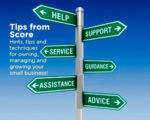Retail
 Question: Even if the summer season is almost over, once I get customers in the door of my retail store, how do you get them to buy?
Question: Even if the summer season is almost over, once I get customers in the door of my retail store, how do you get them to buy?
Answer: This is an age old question. People buy from other people, and they buy what fills a need, want or desire. Conversion is the name of the game in retailing. The key is to convert your store visitors into customers. If prospective buyers enter your front door, make a loop through your store and leave without stopping to look, ask a question or ponder a purchase, they don’t understand what you are selling. Everything they see becomes a blur and doesn’t connect with them.
Talk to your customers. It is no secret that customers are the lifeblood of your business. Without talking to them, finding out what they want or need and having it in inventory will go a long way to converting browsers into buyers. Get feedback from your buyers. Ask for their email addresses and survey them about what they liked, didn’t like and what they would like to see in your store. You cannot possible read the minds of potential buyers, so ask them.
You need to plan their journey, so they instantly know what differentiates your store from others of similar offerings. By having the appropriate level of stock and signage directing visitors to specific categories of products helps them on their buying journey. Then observe their journey. Watch how prospects visit your store. If they don’t buy, why not? If they do, what did they do differently than those that don’t buy?
First five feet keep open to take in what you sell. They can see your merchandise, and you can see them. Keep the first five feet open so that visitors are not overwhelmed with merchandise and make a conscious decision if you have what they are looking for. If not, you can see their visual confusion and interact with them.
Avoid a tidal wave of merchandise that overwhelms store visitors as they enter your establishment. Your merchandising plan should tell stories about what are you selling. If you have women’s accessories, then having a display that features some of all of what you are offering works. If you have just one category on display, it may not resonate, and visitors will turn and leave without fully comprehending what you are offering.
Separate colors so they are not a blur. Colors communicate, so create displays that feature specific colors that connect with the product offerings that attracts and interests buyers.
Use signage so people know what’s what when you are not there. You cannot be everyplace at your shop, so use appropriate signage that is attracting and communicates with buyers so they can find what they are seeking or find what they might not be seeking but interests them. Start with your front window and create integrated signage to leads from one to the other making the journey one that pays in them buying.
Use upper and lower case in your signage. All upper case, “screams” at buyers and most don’t connect with all upper case even though it might be more visible. Use both upper and lower case in fonts large enough to be read from 10-12 feet away. Your signs are like mini-billboards. Shop visitors only have 3 seconds to engage and communicate before they are looking someplace else.
Make the visit to your store just one of the channels where they experience your enterprise. Be online with a website, a Pinterest and Facebook page. Use email newsletters and be on their smartphones. All directing people to the portal of your business.
Less can be more visually. People can see more even if it is less. Sometimes it is just as important to have lots of open space on a rack or shelf so visitors can see what you are offering vs. having stacks or rows of merchandise. Visitors can take in more of how the purchase will satisfy their need if you give them the visual space to internalize it.
Prepare for your customers. Do all the logistical tasks like stocking shelves, pricing, receiving deliveries and placing signage before or after shop hours so that you are totally tuned into store visitors when they enter the store. If they see you are focused on them, that will give you more time to direct them to a possible sale. Also schedule your staff to be there when buyers are there. Lunch can be taken either before or after the noon hour is that is when traffic is heaviest. Also, watch how many people are in line waiting to pay. If this happens and the result is buyers leaving without consummating the sale, have a 2nd POS unit that can be put into service to avoid this conversion leak.
Train your staff. Personnel working your store are much more than just check out, stock or sales clerks. They make your visitors feel welcome. They make them feel special. They are ambassadors. They are the store guide to direct potential buyers to specific products that will fill the visitor’s need or desire. They are the face of the store. They are your brand. They represent the values that define your brand. Make sure that everyone who has customer contact (and everyone else) is trained to address the needs of the lifeblood of your enterprise.
As a final thought, consideration needs to be made whether the store will close for the season, stay open for the shoulder season or stay open all year. This will dictate what you do with your current assortment either by adding new and fresh merchandise if staying open through the holidays or all year and how aggressive you need to be to move older and slower moving merchandise.











